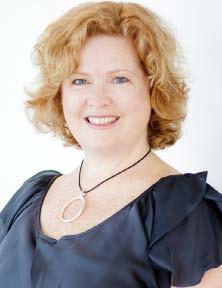
3 minute read
HOW A WIND-DOWN RITUAL PREPARES ME FOR SUCCESS
BY CAMILLE STELL | LAWYERS MUTUAL

Advertisement
ONE OF MY work habits that has had the most impact on my daily routine and my transition away from work was developed during the pandemic. I employ a wind-down routine marking the end of my workday. I heard about the concept from my writing coach, Daphne Gray-Grant. Daphne calls it a shutdown ritual, and you can read more about her process here.
In the before (pandemic) times, I stepped away from my work by getting in my car for an hour commute. I thought about my day, but I also began to naturally transition away from my work mindset. I listened to music or a podcast, I ran errands, or thought about meal planning, and by the time I was home, my day was behind me. I found that during the pandemic, when my office was 13 stairs above my family room, I needed a transition time, I needed a ritual.
Working from home is wonderful in so many respects, but it is also easy for the lines to blur. For emails and Zoom calls to bleed into personal time. Research shows that we need to manage control over work-life boundaries to create a crucial buffer to manage after-hours work stress. According to ScienceDaily, “when work intrudes after hours in the form of pings and buzzes from smartphone alerts, it can cause spikes of stress that lead to a host of adverse effects for workers, including negative work rumination, poor affect and insomnia.”
Here are the five steps I created for my wind-down ritual that mark the end of my workday and prepares me for a successful tomorrow. I allocate 30-40 minutes for my wind-down routine. While I may not do this every day, the days that I do I feel more ready to step away from my desk and better prepared to approach it the next morning.
1. I wrap up my day. I spend 10-20 minutes doing a final check of voice mail and email for the day. I make sure I haven’t overlooked anything important, and if I have, I add it to my project management tool, Trello.
2. I plan for upcoming meetings. If I’m meeting with a client, I make sure I have my notes together, I’ve completed any open action items, and confirm the details of the meeting. Is this a Zoom or in-person? Am I coaching or consulting? Do I have any deliverables that are due to my clients?
Camille Stell is the President of Lawyers Mutual Consulting & Services and the co-author of the newly published book, RESPECT – An Insight to Attorney Compensation Plans available from Amazon. Continue this conversation by contacting Camille at camille@ lawyersmutualconsulting.com or 800.662.8843.
3. I plan for tomorrow. I review my Trello board to mark projects complete as well as take stock of open projects. I prioritize tasks and create my tomorrow to-do list containing no more than 3-5 items that must be completed. I then schedule time on my calendar to complete the work. For me, time-blocking on my calendar is another one of the best disciplines I have learned from this routine. Before, I often stared at an impossibly long to-do list, with no plan for how to tackle it. That is no longer the case. For the first time, I use my calendar to not only block off time for other people, but to time block for my benefit.
4. I create a visual tool. Using a 4 x 6 index card and my favorite purple pen, I outline tomorrow’s schedule. Yes, Trello is the electronic version of this index card, but for me, this single white card with times and tasks noted provides a visual reminder and allows me the pleasure of striking through a completed item. It also makes the day seem more manageable. Everything that “must” happen is contained on a 4 x 6 card – that is not as overwhelming as my entire Trello where a year’s worth of projects are outlined.
5. I engage in my affirmation practice. Each year since the pandemic started, I have maintained an affirmation practice. For some people, choosing a word of the year provides focus, for others setting resolutions is key. An affirmation practice resonates with me. In 2020, I felt unmoored. Setting affirmations, reviewing them in the morning and again in the evening and speaking them out loud was a coaching conversation with myself. The words uplifted me or encouraged me to try harder. As I wrote my 2022 affirmations and compared them to my 2020 writings, I could see the progress I had made in feeling more settled in an unsettled time. Before I started my affirmation practice, I looked at the work of Louise Hay, Lori Deschene who created TinyBuddha.com, and Mastin Kipp, who was creating crisis related affirmations. From these leaders in the concept of the practice, I received insight on how to create affirmations that met my personal circumstances.
A wind-down ritual has become a sacred time for me. It settles me and prepares me to walk away from a desk that is still full of undone work without carrying that work with me into my personal time. Consider creating your own ritual that will allow you to build that crucial buffer between working hours and after-work time. WBF



